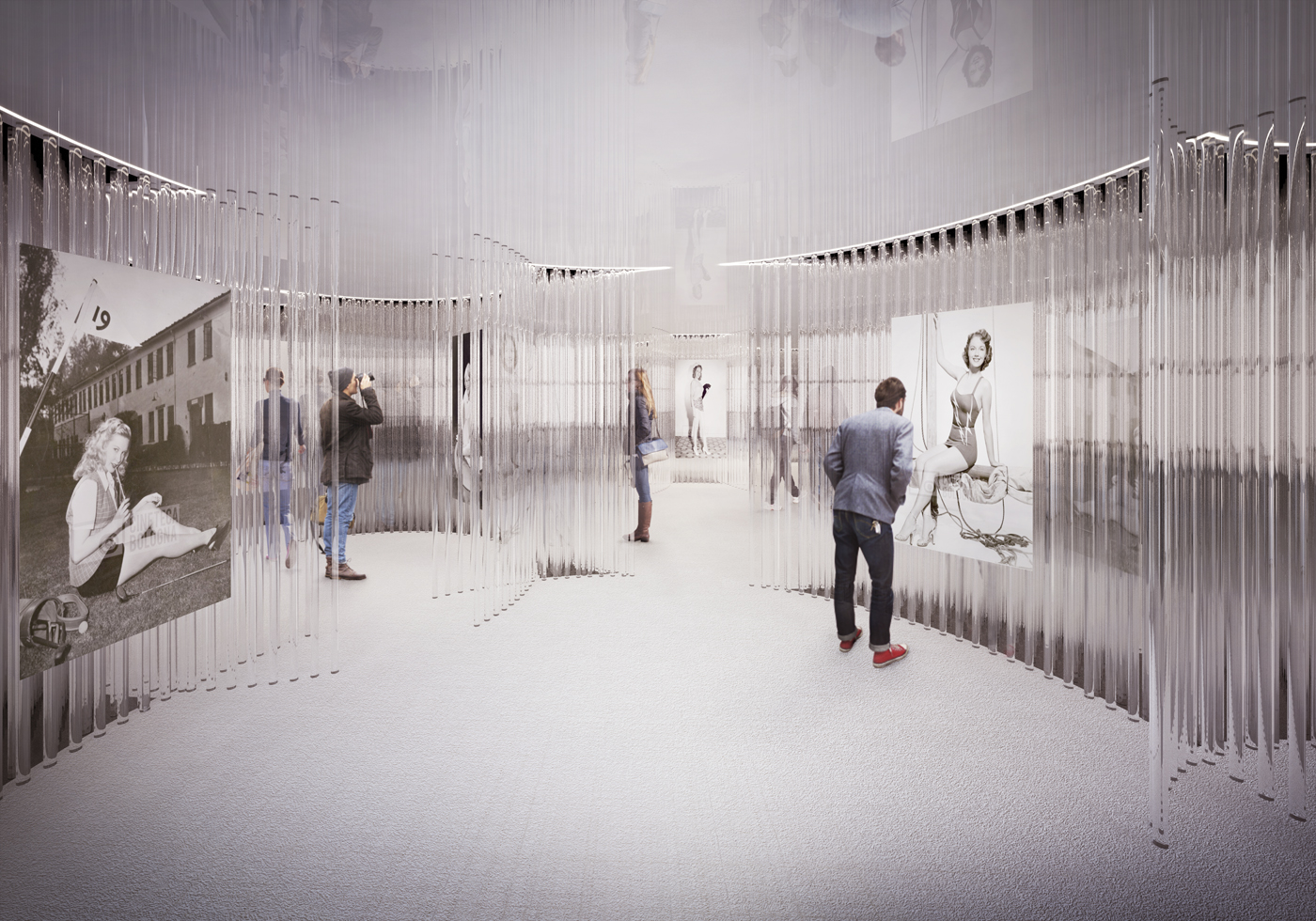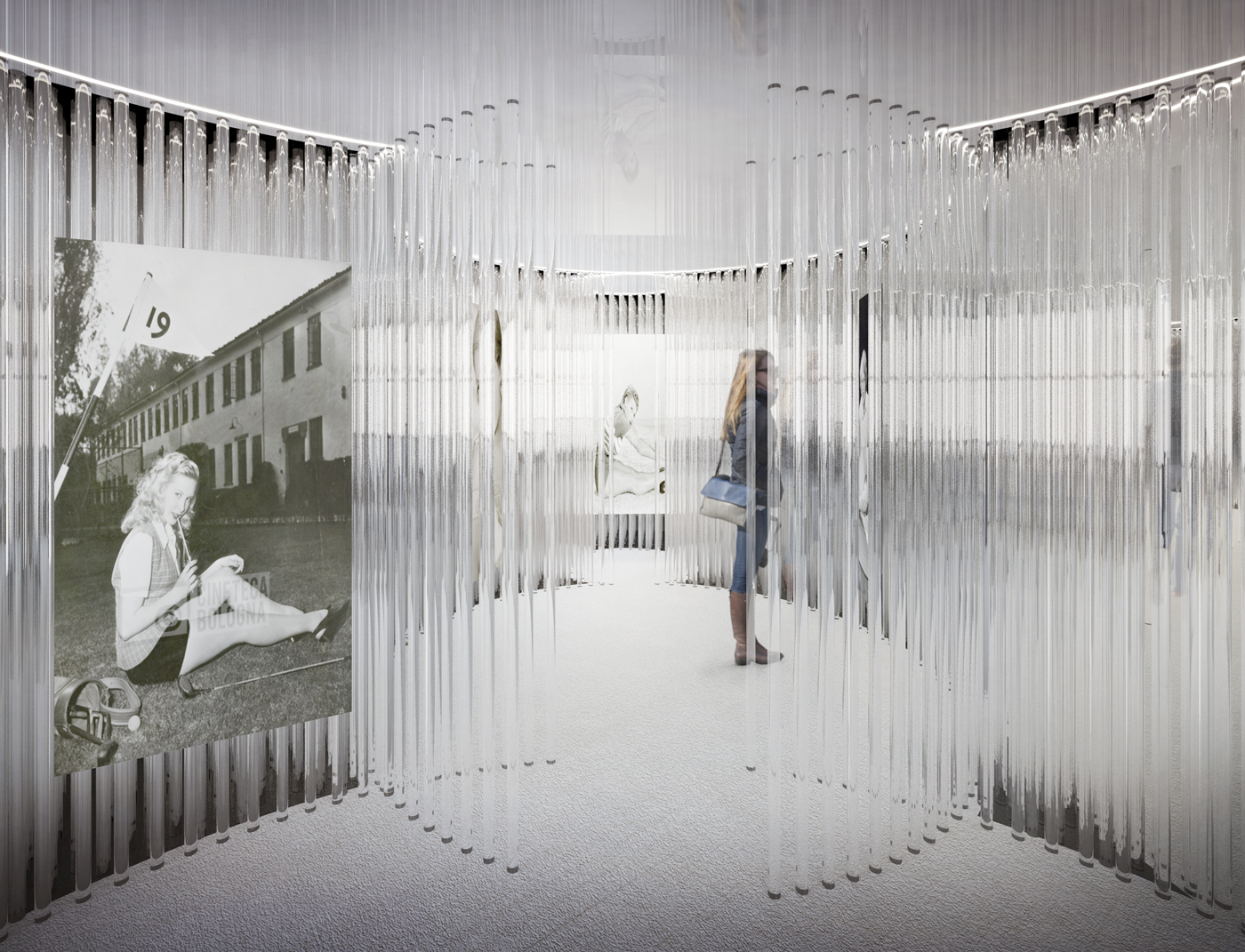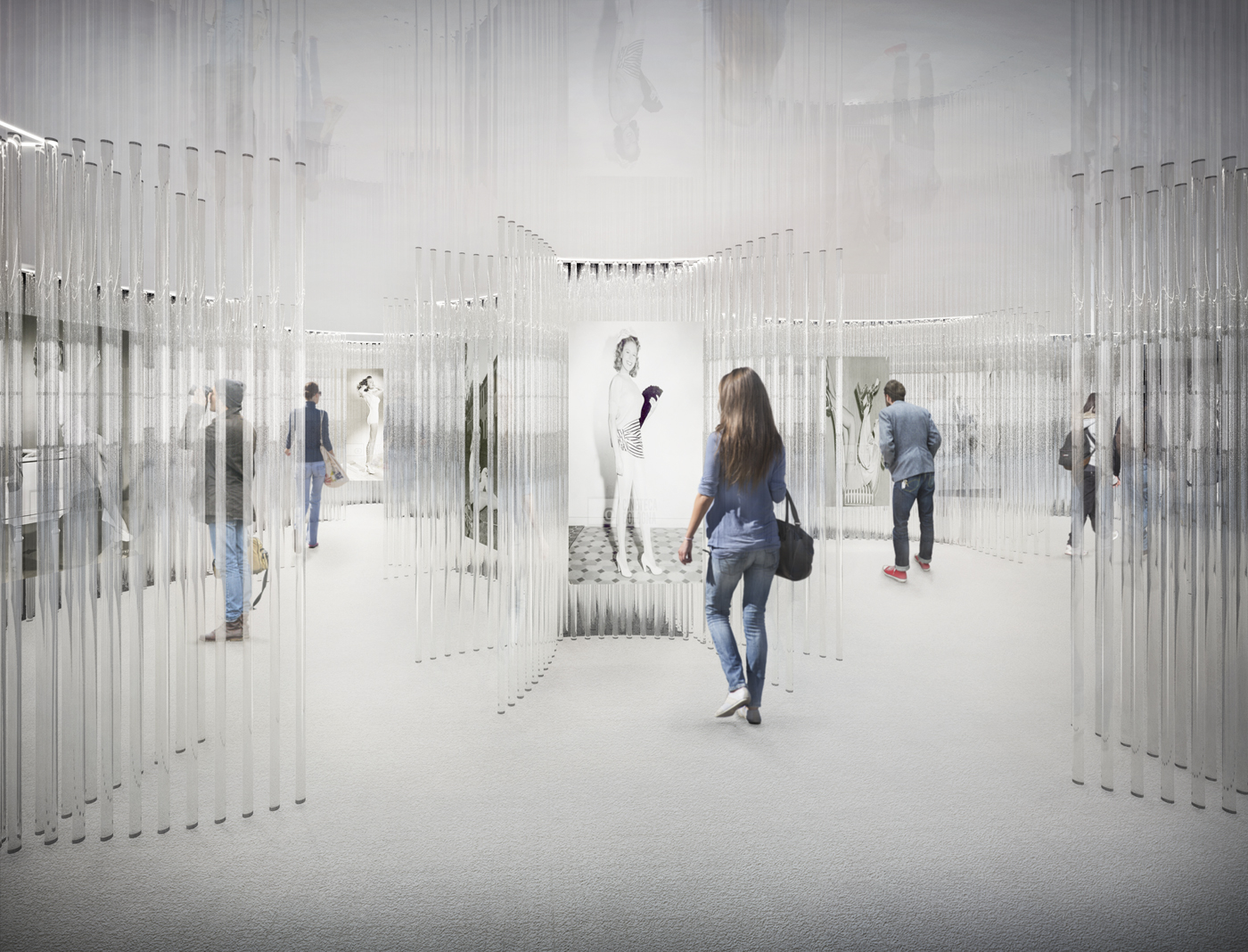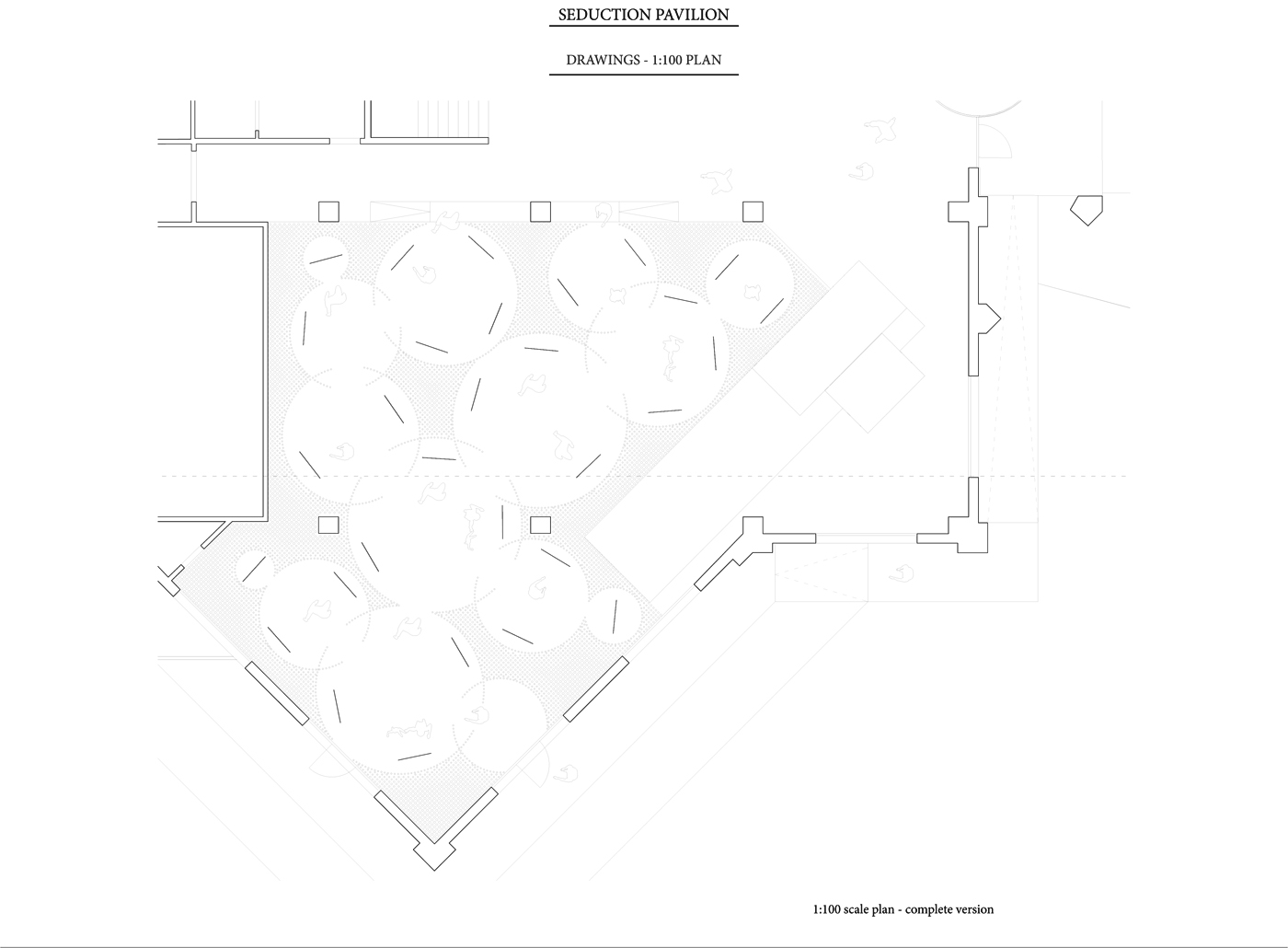Beauty has always been one of the most desirable qualities.
In some cultures it has been associated with goodness, purity, happiness and somehow as a means to achieve success.
Pin-up models worked with their appearance to create an image of Beauty.
Representing oneself only with one’s own image can be extremely ephemeral.
The purpose of the Seduction Pavilion is to create a space to show pictures of pin-up models who did not have success
in life, a representation of the ephemeral value beauty can symbolize.
‘Right angles don’t attract me. Nor straight, hard and inflexible lines created by man….what attracts me are free and sensual curves. The
curves we find in mountains, in the waves of the sea, in the body of the woman we love.’ O. Niemeyer
To celebrate the Beauty of a woman is to celebrate the Beauty of her body.
The project includes a series of circular rooms that intersect each other creating a sinuous path, juxtaposing the shape of the circle,
the symbol of perfection, to the organic nature of the path; a sinous and imperfect movement, as beauty is always imperfect. All rooms are created from a theory of circular glass tubes.
In this way, the glass (or pyrex as a cheaper alternative ) creates a multitude of reflections, recalling the concept of Vanity, like Narcissus who admires his own reflection. However a curved glass deforms all the surrounding space, creating a distorted reality, a metaphor of pin-up models’ dreams that never came true.
Furthermore, glass appears as a fragile material, symbolizing the fragility of the pin-up models’ ambitions. The competition rules do not specify an exact budget. Therefore the project proposes two types of plans, in which the space generated by the intersecting rooms is absolutely the same, but in the first option the glass/pyrex tubes fill the entire external space generating a greater number of reflections, while in the second the number of tubes is reduced for a more economical solution, creating less reflections but maintaining the same quality space.
Lead Architects:
Vittorio Massimo - Riccardo Guglielmi - Enrico Venuda
Project Location:
Bologna
Completion Year:
2018
Gross Built Area:
320 m2




